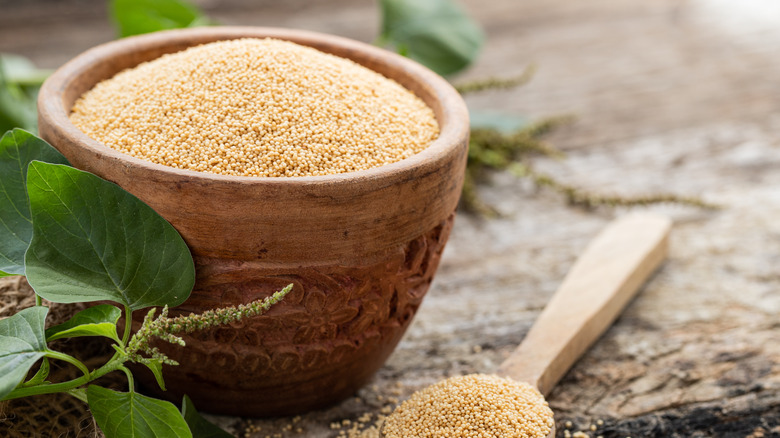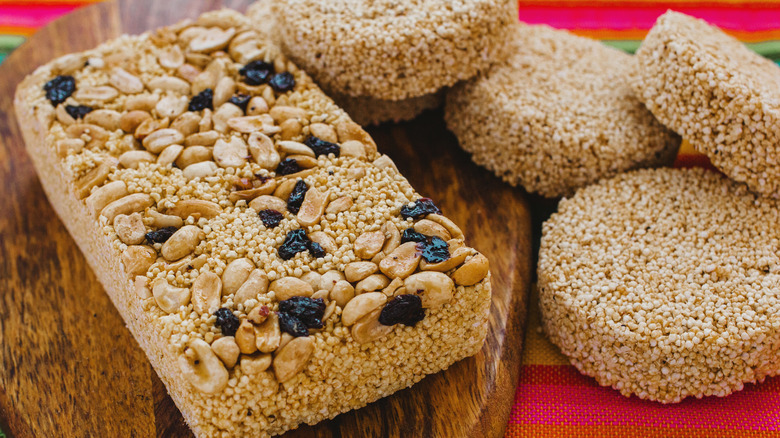How Amaranth Could Be Affecting Your Blood Pressure
Plenty of foods around us contain one important, but at times, over-consumed ingredient. From fast food to steak, and more, it certainly feels like sodium is everywhere.
When you consume too much salt, it forces your heart to pump harder. In turn, this puts your blood vessels at risk of long-term damage. Consuming this food over a long period of time can cause the onset of strokes and heart disease. According to the U.S. Food and Drug Administration, as much as 90% of Americans regularly consume more than the recommended daily serving of salt, and 40% have high blood pressure. While sodium is an important part of our diets, it's something to be wary of. The good news? There may be something you can do to help the level of your intake.
Fortunately, there are several things you can do to lower and maintain healthy blood pressure. Even better, one of these changes has to do with introducing a versatile new breakfast item — amaranth.
Heart health starts with breakfast
If you've never heard of amaranth, you aren't alone. Amaranth is technically a seed, but most people treat it as a grain. It resembles sesame seeds and can be added to smoothies, soups, and chili; but you can also grind it into flour and use it in pancakes, muffins, cakes, or whatever your heart desires. Amaranth is similar to quinoa, but with more protein and a nuttier flavor.
But how exactly does amaranth help with blood pressure? Eat This, Not That says a cup of amaranth contains 38% of your daily magnesium. Magnesium helps relax your blood vessels which in turn relieves pressure. Amaranth is also rich in fiber and further positively affects blood pressure when consumed in the right amount.
Because amaranth is so versatile, the possibilities are endless. Try an amaranth porridge with bananas (another blood-pressure-lowering food), an amaranth pudding, or even an amaranth polenta (via Food & Wine). You can also cook amaranth leaves, as you would spinach, or use them as microgreens in your next salad.

